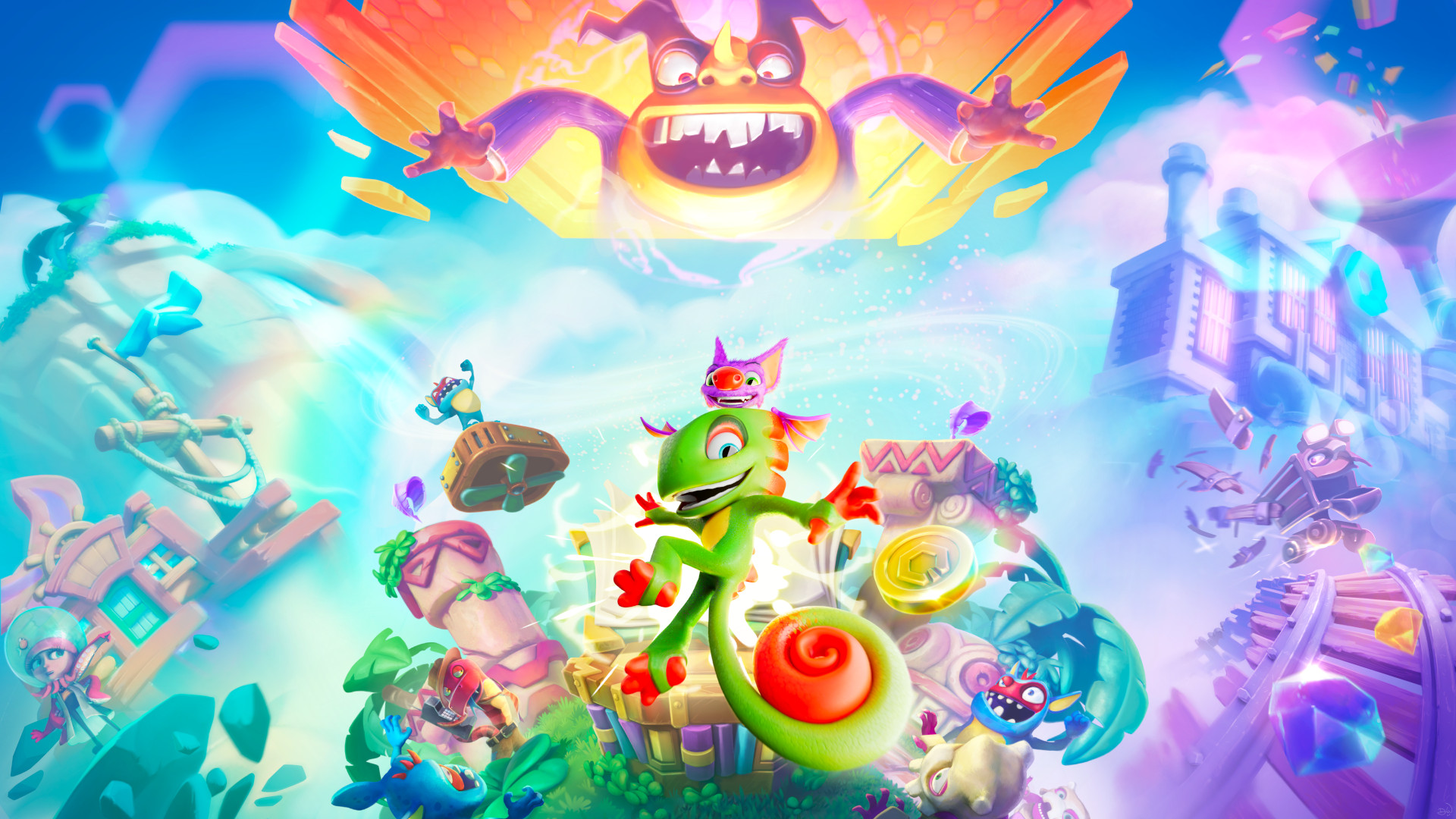By Lucas White
Copyright shacknews

Playtonic Games’ Yooka-Laylee was one of many Kickstarter successes of its time, in an era in which spiritual successors for classic games were an easy hit. The 2017 original was a clear callback to Banjo-Kazooie, a Nintendo 64 platformer known for its googly eyes, wealth of collectibles, and complex platforming moveset. Nearly a decade later Playtonic has returned to the project with Yooka-Replayee, a “re-imagining” that uses the original almost like a blueprint to make something that feels like an entirely different game. It’s a fascinating approach that feels great to play, but loses some of its identity in the process.
Replaylee value
Yooka (a friendly, green chameleon) and Laylee (a purple, crude bat) are friends who are just kind of hanging out on an abandoned pirate ship, but get roped up into an adventure involving a magical book and an evil, capitalist Bee aptly named Capital B. In Yooka-Replaylee, the pair is going through a scrapbook recounting their adventure to themselves, and Laylee is not above shamelessly embellishing. Thus we have a cute, in-universe excuse to revisit the story, and a diegetic reasoning for all the differences. And there are a ton of differences.
It’s hard to understate just how different the experience is compared to the original. So much so that “remake” almost doesn’t feel like an accurate label. The tip of the googly-eyed spear here is Yooka and Laylee’s elaborate moveset, which is now fully unlocked from the jump. Banjo-Kazooie and its ilk operated by rolling moves out over time, making the controls themselves a collectible and adding a Metroidvania-like garnish to the adventure. That’s out of the window now, and much of the game is redesigned as a result, especially the hub world. It’s a shock for sure, considering how rooted in tradition that ritual of finding and unlocking moves was.
More, more, more
On top of giving you all the moves, Replaylee is also the result of a massive streamlining effort. The controls and camera have been overhauled and frankly improved; moving around the world and doing things (and being able to see clearly) feels better than before by a wide margin. There’s also a map now, with unlockable fast travel points. Considering the number of “Pagies” has literally doubled, being able to track what you have and haven’t found is a boon. But there’s a side effect of all this streamlining which I hinted at earlier. While the streamlining feels nice and convenient, it has removed some of the game’s unique presence among its peers.
This is echoed in the new UI, especially with dialogue. This is going to sound silly at first perhaps, but hear me out. In the original, Yooka-Laylee was 1:1 with Banjo-Kazooie. When a character spoke, a specific sound effect ringed in a transparent, rounded dialogue cloud that slowly filled with text while the speaker made silly, grunty noises for as long as the text rolled out. Now, the boxes and text are smaller and have a background, the conversations move faster, and there are only a few “grunts.” Does this “feel” better, by shaving small chunks of time off conversations? Are fewer silly grunts less annoying to some players? Probably, sure. But that unique slice of personality is dead now, smoothed over by “modernization” cement. The map, additional Pagies, and open moveset are also a part of this strange equation.
Banjo-Mario… ie?
It feels like the goal here was to update Yooka-Laylee for contemporary gaming language, to update it from its “outdated” Nintendo 64, Rare-trademarked, Banjo-Kazooie-flavored origins. But what that really translates to, as it feels to play in my hands, is make it like Mario. It’s like Playtonic took its tribute to Banjo-Kazooie and fed it through a Super Mario Odyssey-branded copy machine. The way you run around and encounter Pagies through small challenges or environmental puzzles, in addition to the more scripted-feeling scenarios more reminiscent of the original, feels like Mario Odyssey. The way the Pagies are listed and checked off on the map screen feels like Mario Odyssey. The way you now collect coins that weren’t there before to unlock things like cosmetics… feels like Mario Odyssey.
That isn’t to say the experience is totally compromised. It’s just very different, and many of the ways in which it is different remind me more of the stuff Nintendo is doing with its flagship platformers (Mario Odyssey and Donkey Kong Bananza, specifically) than what Rare used to do, and what Playtonic shares its DNA and history with. Does Yooka-Laylee need to have those clear-cut parallels to Banjo-Kazooie to be good? No, and in some ways the changes are purely “improvements” if we were to look solely at games like software products. But things have been lost in the process, and those things ultimately are (or were) elements flavored by history. Losing those things isn’t the same as solving glitches or improving physics.
Yooka-Replaylee is a great platformer for those looking for an alternative to the likes of Mario and Sonic. If you played Banjo-Kazooie back in the day and missed Yooka-Laylee the first time around, there’s a lot to enjoy here, and despite my misgivings, a lot of that sense of tribute is still strong. If you have played it, the improvements and changes make it worth the, well, Replaylee. From super dialed-up visual fidelity to rearranged levels and punched-up controls, this goes well beyond a simple remaster or gussied-up remake project. It’s a thorough re-imagining, and even just sitting down with it to make the comparison is a fun and engaging exercise. I disagree with the way some of the edges have been sanded off, but Yooka-Replaylee is still a great time. And Trowzer the Snake is still hilarious.
Yooka-Replaylee is available on October 9, 2025 for PC, PlayStation 5, Xbox Series X|S, and Nintendo Switch 2. A PC code was provided by the publisher for this review.